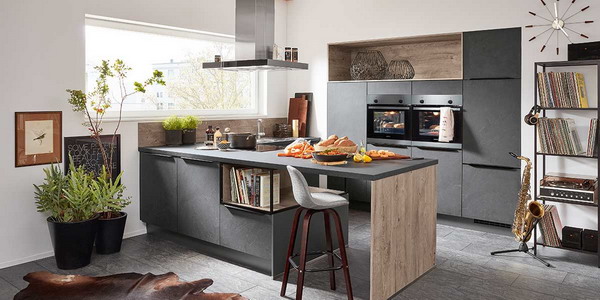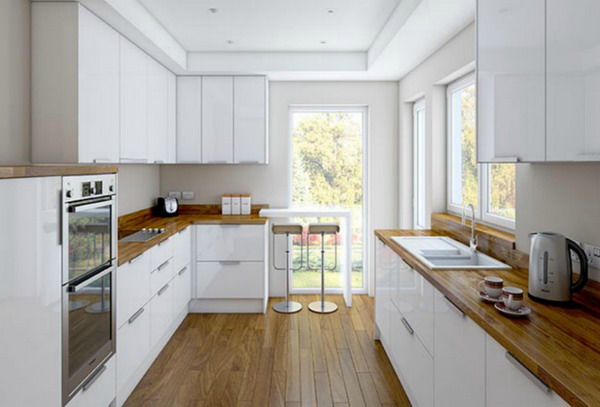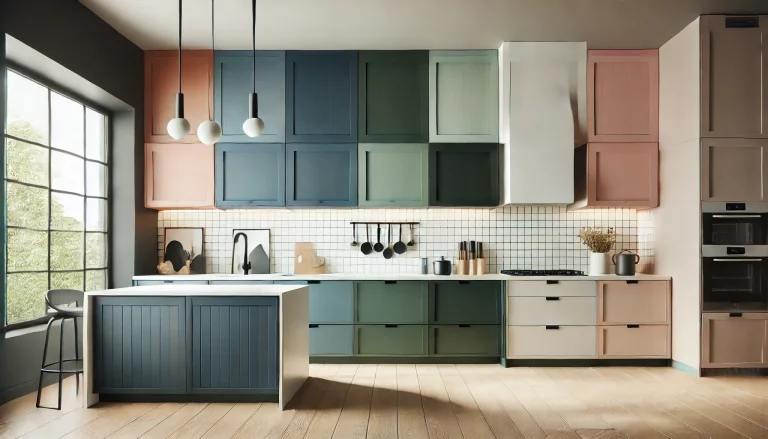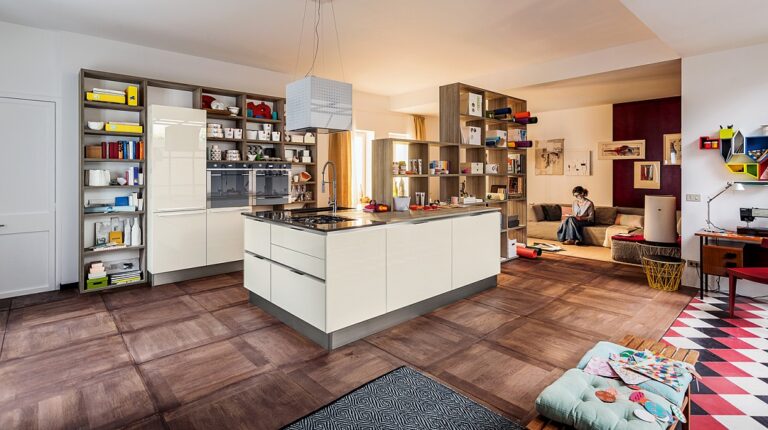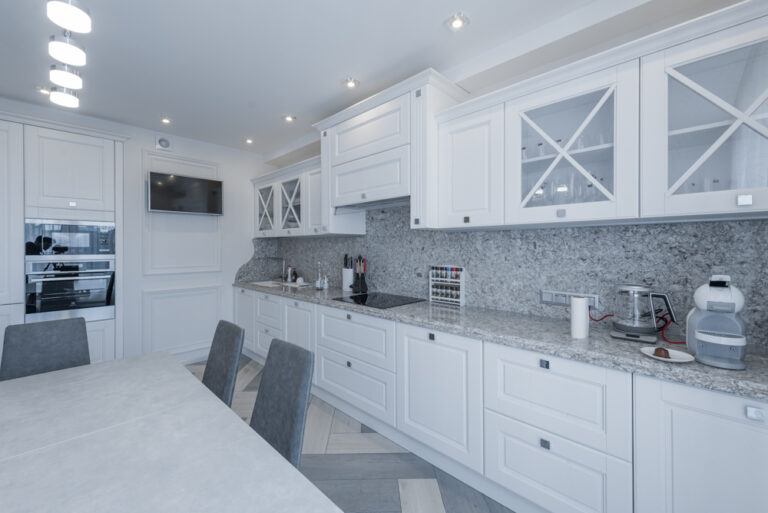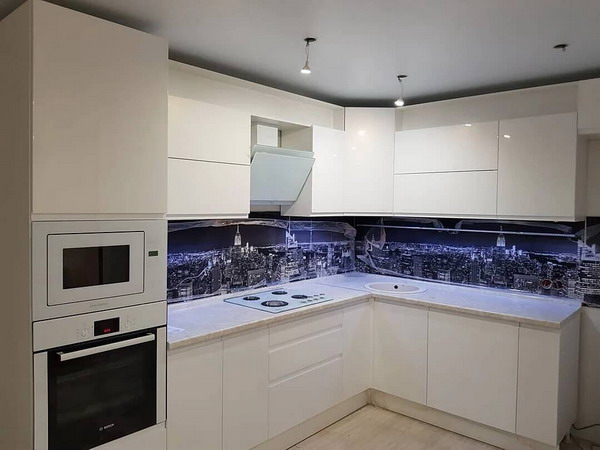Extractor hood – circulating air or exhaust air
Extractor hoods with circulating air or exhaust air are present in most kitchens and are now part of the basic equipment. They eliminate annoying odors and fumes and provide fresh air in the living space. Where windows previously had to be opened and ventilated, extractor hoods are now used. The selection of extractor hoods is enormous and many kitchen studios – like our kitchen studio in the Münster area – offer a variety of different designs, materials and price ranges. When planning a kitchen or replacing old appliances, the question arises as to whether exhaust air or recirculated air should be used.
There are various reasons and factors that influence the decision regarding extractor hoods with recirculating air or exhaust air. Here you will find all the relevant information on the question: “Extractor hood – recirculated air or exhaust air?”.
Contents
- Selection criteria for extractor hoods: circulating air or exhaust air
- Extractor hoods circulating air and exhaust air – the different types
- Which extractor system requires which filters?
- Extractor hoods recirculating air or exhaust air – a question of design
- Conclusion – extractor hood recirculating air or exhaust air?
Selection criteria for extractor hoods: circulating air or exhaust air
When looking for the right extractor hood, it is worth choosing according to these criteria:
- Heat loss
- Installation effort
- Noise level
- power consumption
- Preis
- Luftfördermenge
- Operating mode
- Grease separation efficiency
- Width and distance of hob and extractor hood
- Follow-up costs (e.g. filter change)
Extractor hoods circulating air and exhaust air – the different types
The extractor hoods for circulating air and exhaust air deal with the sucked in air in different ways. Therefore, not every extractor hood is suitable for all kitchens. Below you will find the most important differences between the extractor hood systems.
What is a circulating air extractor hood?
The extractor hood recirculating air directs the room air drawn in above the stove and the cooking fumes through an odor and grease filter. These filter out fat in the air and unpleasant odors caused by food preparation. The clean air is then returned to the room.
What are the advantages and disadvantages of circulating air?
A big advantage of recirculated air is the low cost and installation effort compared to exhaust air. Recirculating air hoods run autonomously and do not require any special structural measures. A break through the wall is therefore not necessary. This type of extractor hood is therefore particularly suitable for a rental property or a subsequent kitchen installation. Recirculating air hoods can be easily mounted on the wall or above a kitchen island.
It should be noted that the extractor hood does not filter moisture or carbon monoxide. Additional ventilation is important at this point. The activated carbon filter must be replaced at regular intervals.
The noise level is also a relevant factor when it comes to the right extractor hood. Noises are caused by the air flow, the fan and the motor. On average, recirculation mode is louder than exhaust hoods. Clogged grease and activated carbon filters also increase air resistance and therefore also the noise. In order to completely remove kitchen fumes, water vapor and food odors and to dry the activated carbon filter, circulating air hoods should run on the lowest setting for about 15 minutes after cooking.
What is an exhaust extractor hood?
Exhaust hoods suck in the room air or vapors, filter this through a grease filter and then direct the room air via the exhaust duct into the chimney shaft or wall box and thus outside. The fresh air comes inside via the outside air vents or the window. Exhaust air systems therefore have a significant advantage over recirculation hoods in terms of performance.
What advantages and disadvantages does exhaust air offer?
There is no need to replace the filters with the exhaust air hoods. The broad performance of the filter system filters out moisture and carbon monoxide from the indoor air. Exhaust air systems therefore have a significant advantage over recirculation hoods in terms of performance.
Exhaust extractor hoods are on average ten decibels quieter, but require careful planning when installing a replacement air duct or duct system. This makes the exhaust system more expensive than a system with recirculated air. If you have a fireplace in use at the same time, you should speak to a chimney sweep first. If there is not enough fresh air flowing in, there is a risk of increased carbon monoxide concentrations in your living spaces.
The supply air and the exhaust air duct are accompanied by increased heat losses or energy losses due to increased heating costs. This factor is particularly relevant for energy-saving houses or efficiency houses (KfW). In this case, when choosing the extractor hood, the building standards introduced by the KfW must be adhered to.
Extractor hood recirculation and exhaust air combined: hybrid hoods
If you don’t want to do without extractor hoods with recirculating air or exhaust air, you can benefit from both systems. Many manufacturers now offer combinations of extractor hoods. These can be found commercially under the name hybrid hoods. The hoods can be converted into a recirculation device with an activated carbon filter.
Which extractor system requires which filters?
To find out whether an extractor hood for circulating air or exhaust air is suitable for your kitchen, you should also take a look at the corresponding filters. Below you will find the most important aspects regarding the activated carbon and grease filter.
What is an activated carbon filter?
A carbon filter absorbs odors that arise when cooking and directs the cleaned air back into the kitchen in recirculation mode. Activated carbon filters therefore act as odor filters.
However, over time, the fine pores of activated carbon can become clogged. The frequency of changing the circulating air filter depends on the individual use of the extractor and cooking behavior. It is recommended to change the filter after six to twelve months. However, there are also regenerable activated carbon filters that last two to three years.
What is a grease filter in extractor hoods for circulating air and exhaust air?
A grease filter is present in extractor hoods for circulating air and exhaust air. This is usually a metal mesh on which the fat particles from cooking settle. Extractor hoods for circulating air and exhaust air are marked with a grease separation level (A to G). This measurement indicates what percentage of the fat contained in the air is absorbed by the fat filter.
Grease filters should be cleaned in the dishwasher. Make sure that there are no dishes in the dishwasher other than the metal filter. Otherwise, food residue can get lost in the metal mesh, which significantly impairs the filter performance. Also avoid cleaning aluminum filters in the dishwasher. The material becomes dull, stained in the dishwasher and decomposes after a while.
Extractor hoods recirculating air or exhaust air – a question of design
In addition to the question of performance, the design of kitchens is important when it comes to exhaust air or recirculation air. Extractor hoods can be found in many shapes and for different needs. Which hood is suitable depends on the nature of the kitchen and what demands you have on the function and design of the hood.
Mounting on the wall
If your hob is located below the upper cabinets or near the wall, you can opt for wall hoods or overhead hoods. Wall hoods are attached directly to the wall above the hob. Headroom hoods are slanted wall hoods that provide headroom. If you prefer something simpler, there are hoods that can be integrated into your kitchen furniture. Flat screen hoods, intermediate hoods or under-structure hoods are ideal for this.
Open kitchen
If you are looking for a solution for extractor hoods for circulating air or exhaust air in an open kitchen or kitchen island, you can save space with a ceiling hood. These can be elegantly mounted under your kitchen ceiling. If you have an island in the kitchen, an island hood or a hob extractor is ideal. Island hoods are attached to the ceiling above the kitchen island. Hob extractors are integrated extractors in the cooking area. These are particularly effective because cooking vapors are extracted directly at the point of origin.
Small kitchens
If you need an extractor hood for circulating air or exhaust air for a small kitchen, rely on the space-saving solution of the flat screen hood, intermediate hood or under-unit hood. These hardly take up any space and can be easily integrated into small kitchens. Flat screen hoods are installed in a wall cabinet. To operate the hood, the vapor screen is pulled out. The hood body often takes up the entire interior of the cabinet. Intermediate hoods are covered with the folding furniture front. For use, the front panel is folded forward to create a vapor trap space. Under-unit hoods are flat extractor hoods that are mounted under a wall cabinet or on the wall. In contrast to the flat screen hood, they do not take up any storage space in the upper cupboard, but are also much more eye-catching in appearance.
Conclusion – extractor hood recirculating air or exhaust air?
Regardless of whether it is an extractor hood with recirculating air or exhaust air – both systems have their advantages and disadvantages. Which design is suitable for your kitchen depends on your individual living situation. If there is no exit to the outside or possible, you need a recirculation system. If there are air accesses or the possibility of a wall breakthrough, you can choose an extractor hood with recirculating air or exhaust air, depending on your individual needs. Don’t want to decide between recirculated air or exhaust air? Then choose a hybrid hood!
Do you have any questions about extractor hoods, recirculating air or exhaust air and other kitchen accessories? Please feel free to contact us by phone, email or simply stop by. We look forward to seeing you!
